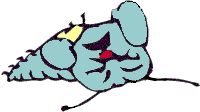
You can manipulate at least some of the design-time objects that show up in the _VFP.Objects collection, but in VFP 6, we found it a dangerous game to play. We crashed or froze VFP more often in a couple of hours playing with the Objects collection than in weeks of doing other stuff. So far, in VFP 7, this collection seems a lot more stable.
